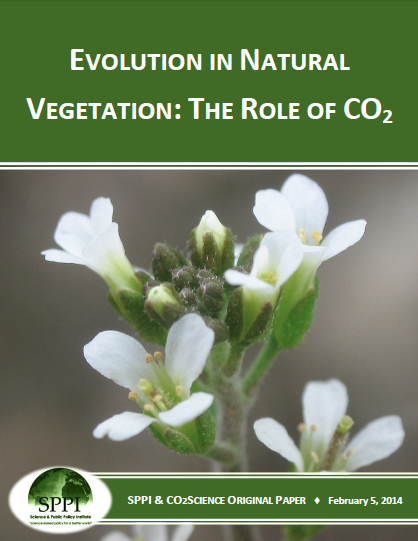News / Science & Technology
EVOLUTION IN NATURAL VEGETATION: THE ROLE OF CO2

Some two decades ago, Root and Schneider (1993) wrote that CO2-induced changes in global climate were expected - by them and other climate alarmists - to occur "too fast for evolutionary processes such as natural selection to keep pace," while adding that this phenomenon "could substantially enhance the probability of extinction of numerous species."
This famous but unsubstantiated declaration has ever since pervaded the thinking of the world's climate-alarmists. But is the highly-hyped contention correct? This document broaches that question as it pertains to demonstrable CO2-induced changes in natural (i.e., non-agricultural) terrestrial vegetation, as revealed by a number of subsequent scientific studies.
In introducing the report of their investigation of the subject, Rae et al. (2007)1 wrote that various studies "are beginning to identify genes that appear sensitive to elevated CO2 (Gupta et al., 2005; Taylor et al., 2005; Ainsworth et al., 2006)," while noting that "leaf growth responses to elevated CO2 have been found in Populus," and that "quantitative trait loci (QTL) for this response [have been] determined (Rae et al., 2006)." And in a continuation of this endeavor, they worked with a three-generation Populus pedigree generated by the hybridization of two contrasting Populus species - where two full-siblings from the resulting F1 family were crossed to form an F2 family - growing cuttings of the different generations for 152 days out-of-doors in open-top chambers maintained at either the ambient CO2 concentration or concentrations on the order of 600 ppm, while measuring various plant properties and physiological processes and determining QTL for above- and below-ground growth and genotype-by-environment interactions.
This work revealed, in the words of the four UK researchers, that "in the F2 generation, both above- and below-ground growth showed a significant increase in elevated CO2," and that "three areas of the genome on linkage groups I, IX and XII were identified as important in determining above-ground growth response to elevated CO2, while an additional three areas of the genome on linkage groups IV, XVI and XIX appeared important in determining root growth response to elevated CO2." Consequently, stating that their results "quantify and identify genetic variation in response to elevated CO2 and provide an insight into genomic response to the changing environment," they concluded that further work in this area "should lead to an understanding of micro-evolutionary response to elevated CO2," as has been further demonstrated to be the case by subsequent studies.
